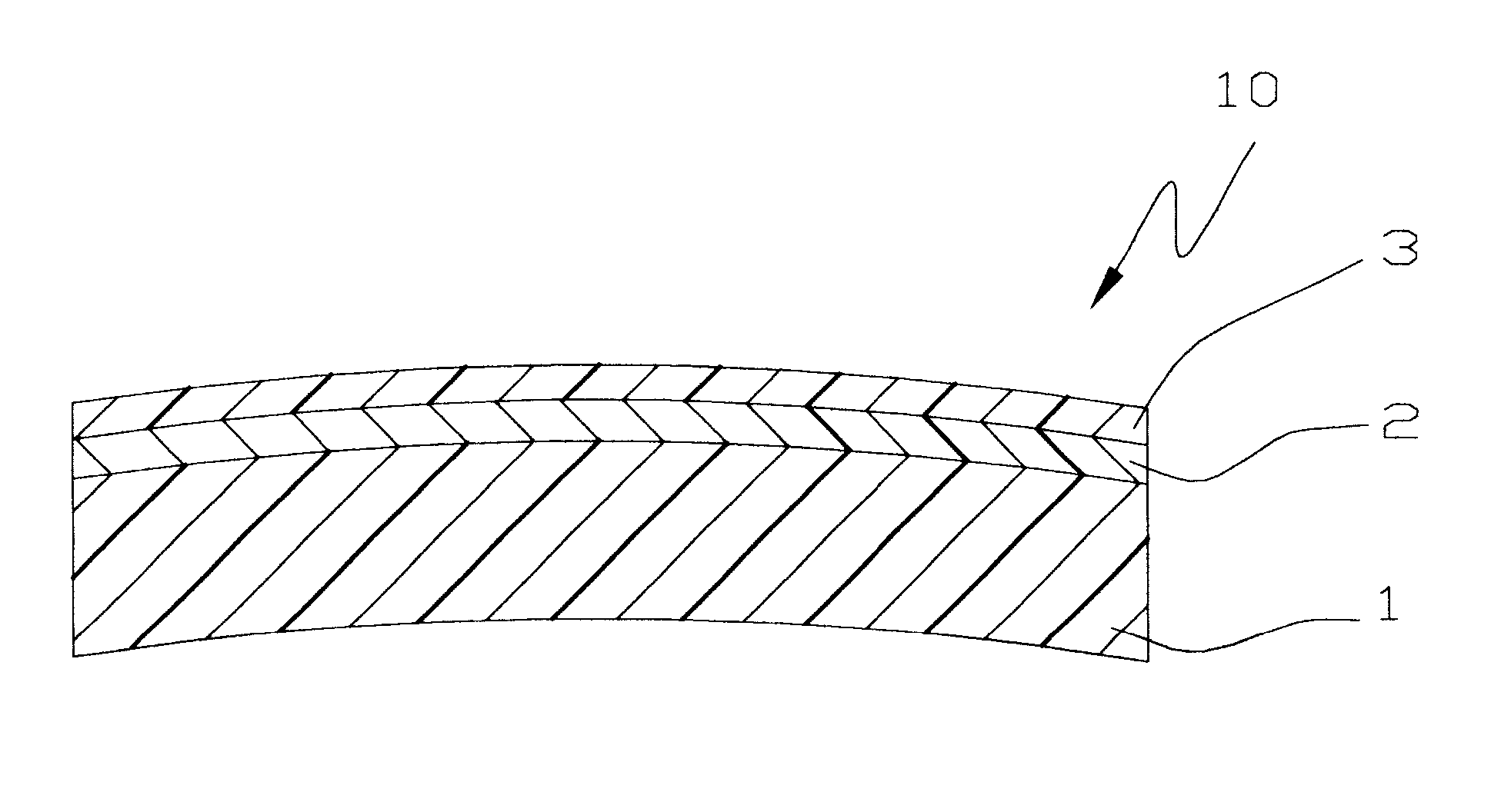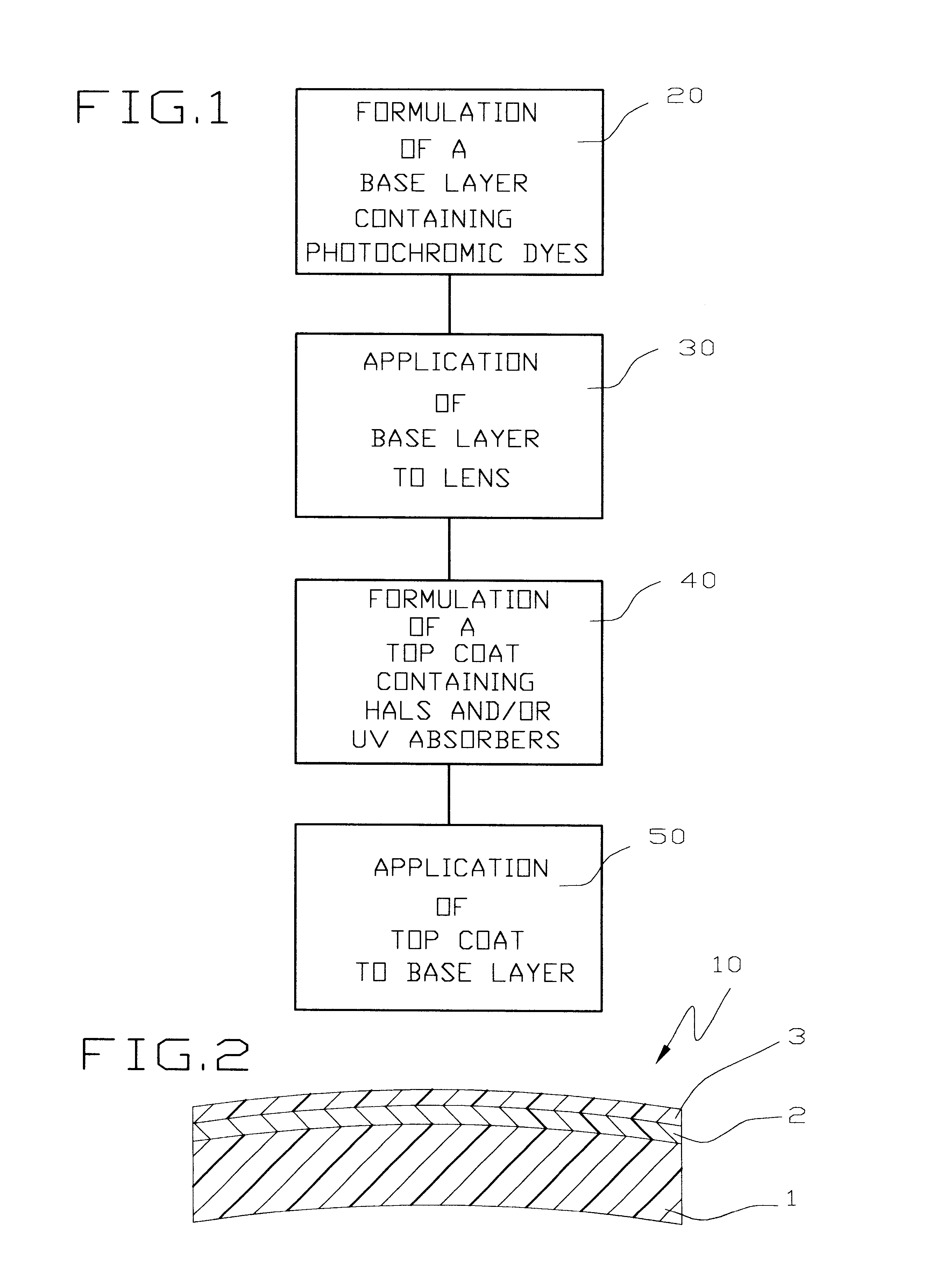Top stabilized photochromic lens system
- Summary
- Abstract
- Description
- Claims
- Application Information
AI Technical Summary
Benefits of technology
Problems solved by technology
Method used
Image
Examples
example 2
A modified base layer was prepared using the same technique as in Example 1 except that a napthopyran based purple was substituted for the blue spirooxazine. A powered, hindered polyphenolic antioxidant in the amount of 2.0 parts by weight was then stirred into the solution to further stabilize the napthopyran dye. Upon complete dissolution, the composition was filtered and prepared for application.
The hardcoat layer from Example 1 was modified by adding 1.5 parts by weight of a pelletized oligomeric triazine-functional HALS, 0.5 parts by weight of a powered hindered polyphenolic antioxidant, and 1.8 parts by weight of liquid benzotriazole-based ultraviolet absorber. The solution was stirred for 30 minutes and the composition filtered through a 0.5 micron nylon membrane. The base coat and the top coat were applied to a CR-39 lens was in Example 1. The napthopyran purple exhibited excellent life and depth of color, as summarized in Table I.
example 3
To produce a coating composition compatible with polycarbonate lenses, the toluene in the base layer coating solution in Example 1 was replaced with a mixture of equal parts of isobutanol, xylene and diacetone alcohol. A benzophenone UV absorber in the amount of 3.0 parts by weight was stirred into the solution.
It was desired to produce a top layer coating with great flexibility for use on thin plastics such as window glazing, goggle inserts and the like. To this end, 58 parts by weight of n-butanol were added to 2 parts by weight of a green spirooxazine dye, 0.2 parts by weight of a phenolic antioxidant, and 30 parts by weight of a glycouril-formaldehyde melamine resin having anon-volatile content of 88% by weight. The mixture was stirred and then 10 parts by weight of a polyol formed by the condensation of sucrose and diethylene glycol was added to the solution.
To 100 parts by weight of the top layer coating obtained above was added while stirring: 0.1 parts by weight octadecyl-fu...
PUM
 Login to View More
Login to View More Abstract
Description
Claims
Application Information
 Login to View More
Login to View More - R&D
- Intellectual Property
- Life Sciences
- Materials
- Tech Scout
- Unparalleled Data Quality
- Higher Quality Content
- 60% Fewer Hallucinations
Browse by: Latest US Patents, China's latest patents, Technical Efficacy Thesaurus, Application Domain, Technology Topic, Popular Technical Reports.
© 2025 PatSnap. All rights reserved.Legal|Privacy policy|Modern Slavery Act Transparency Statement|Sitemap|About US| Contact US: help@patsnap.com


